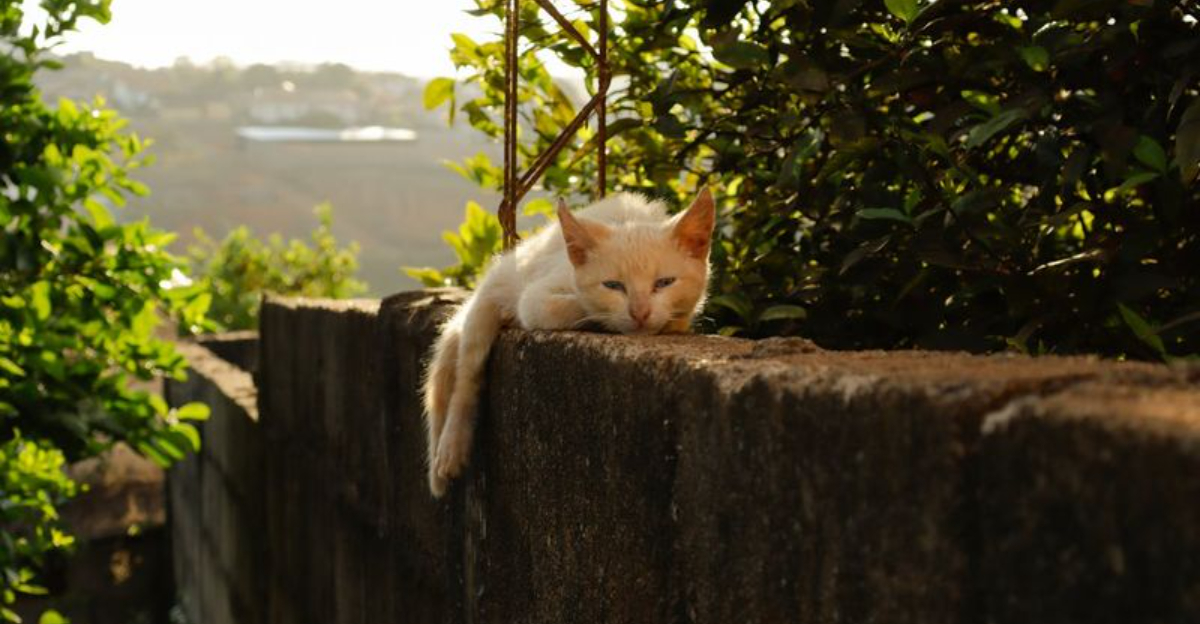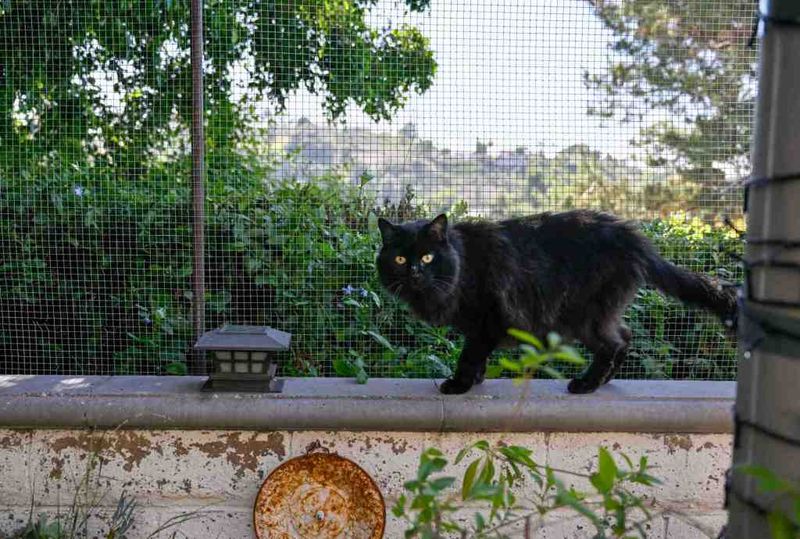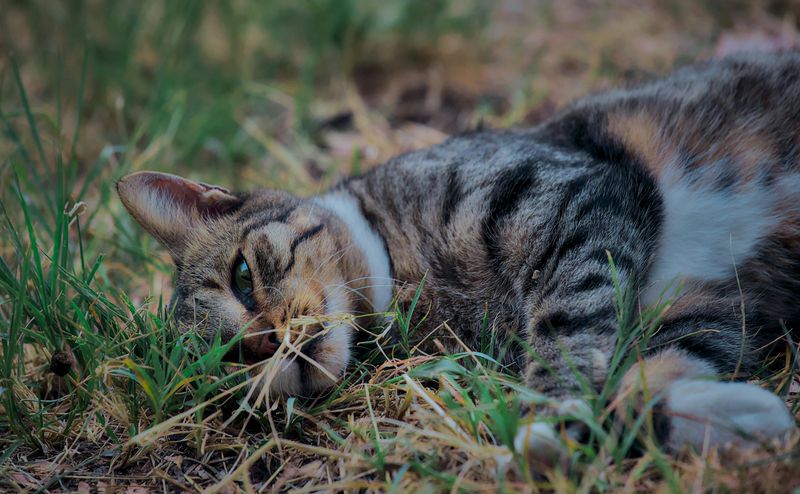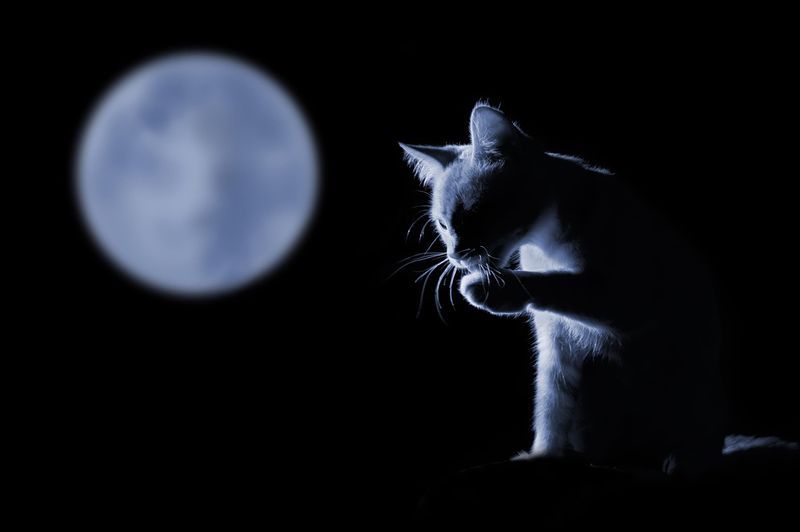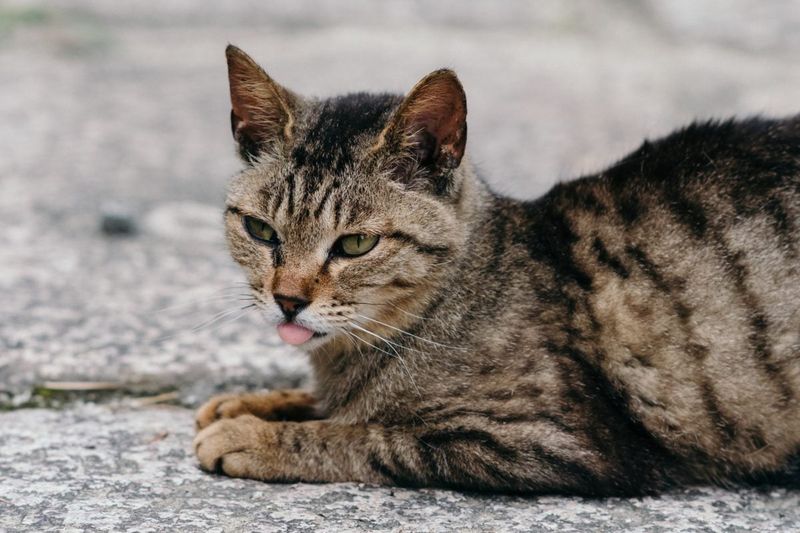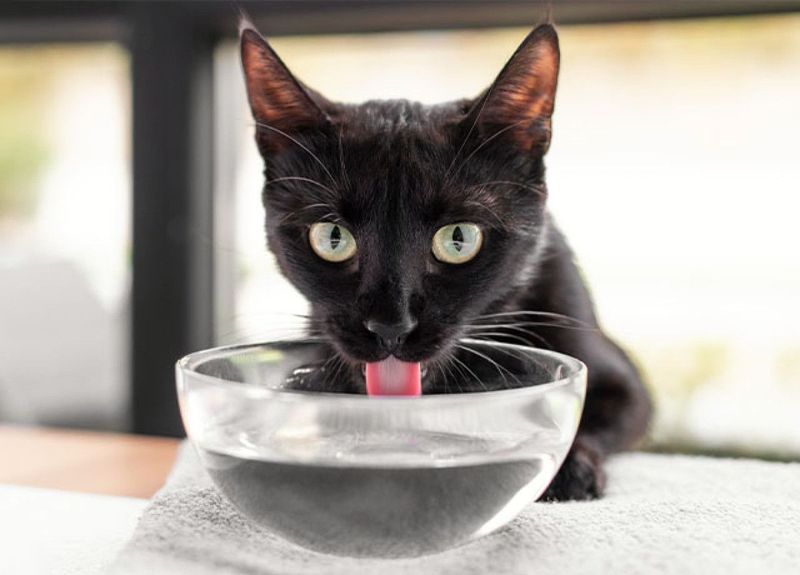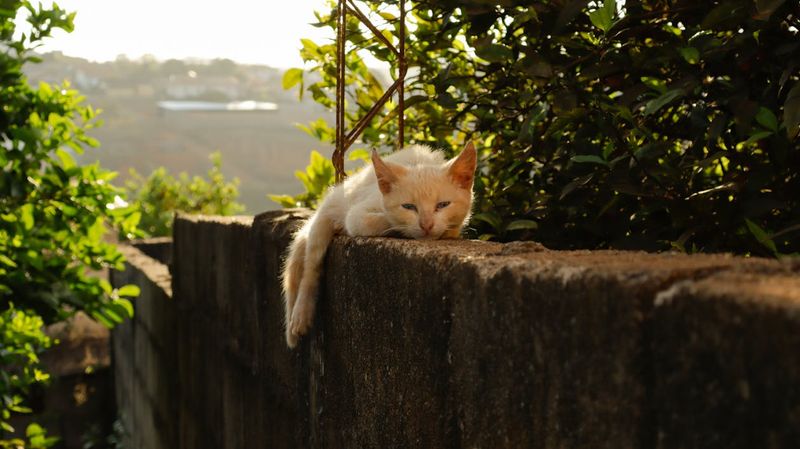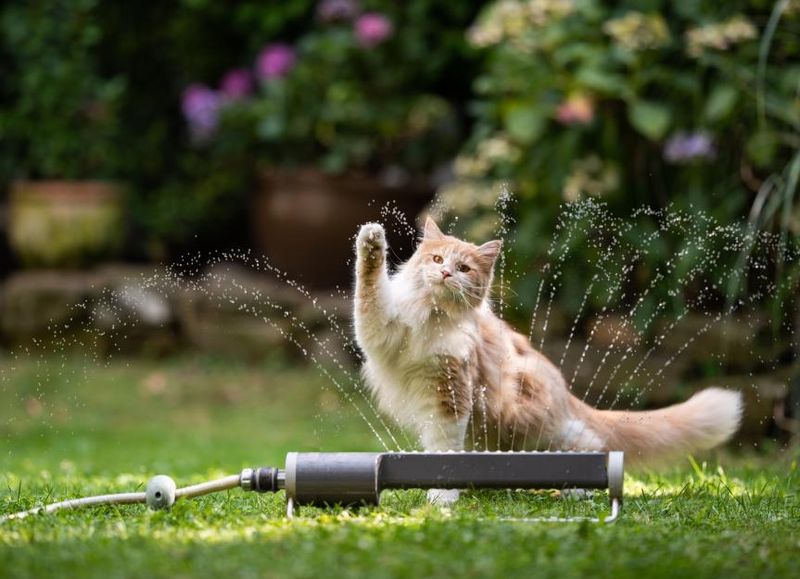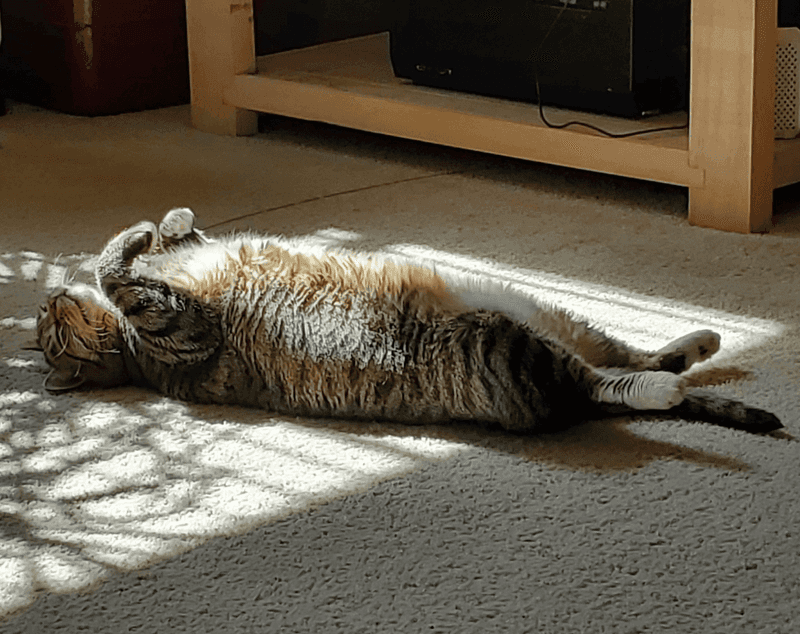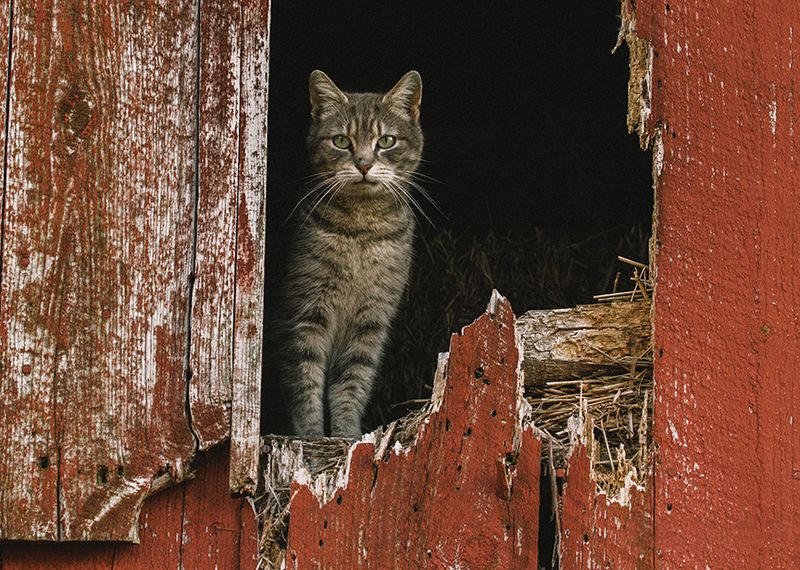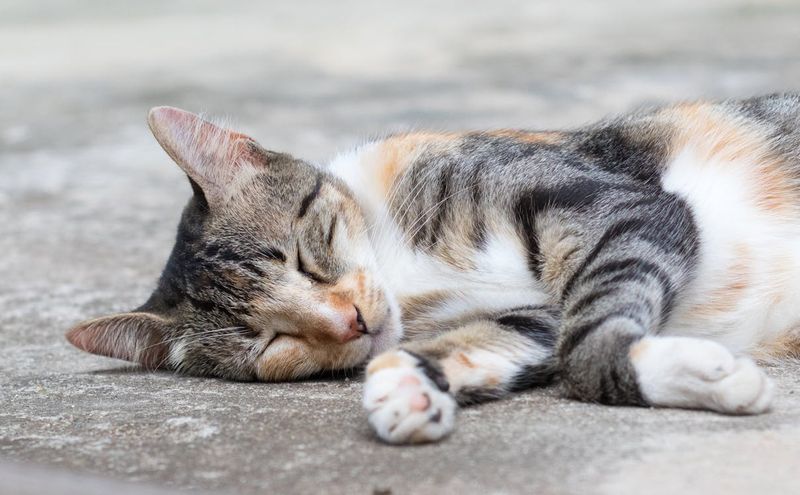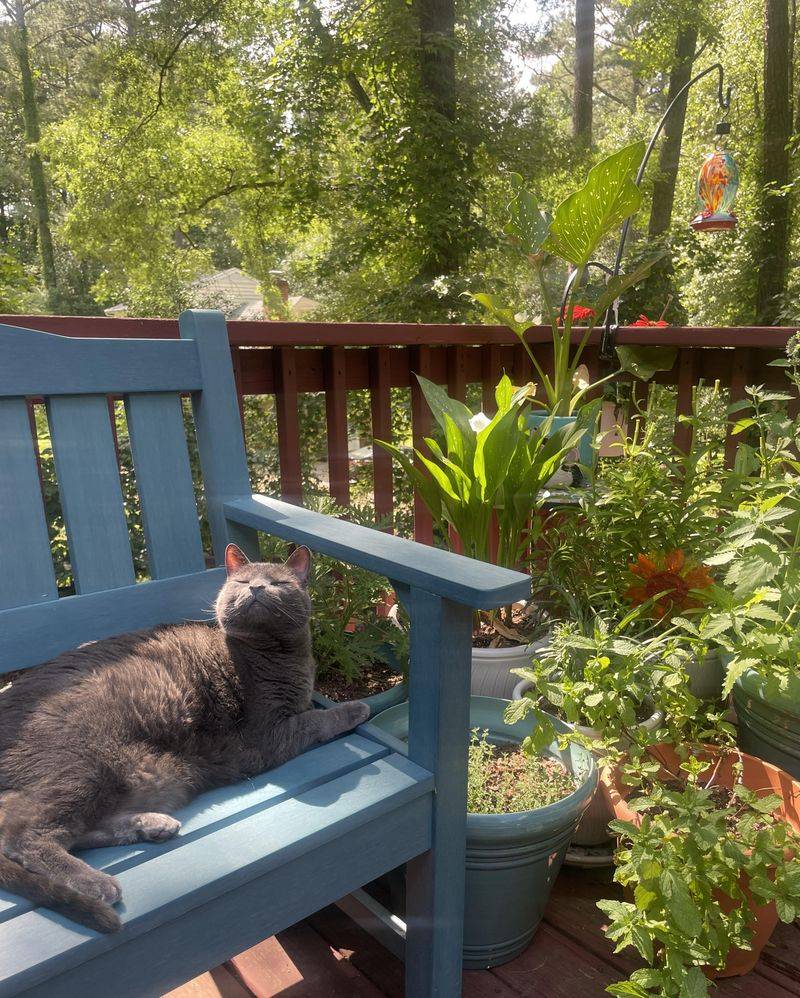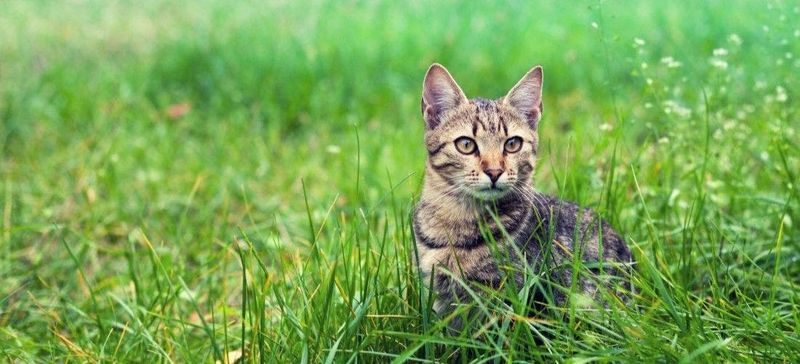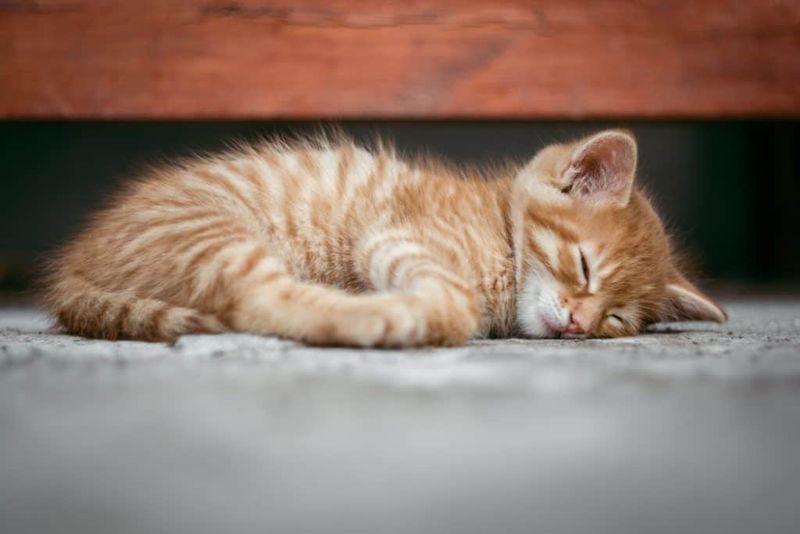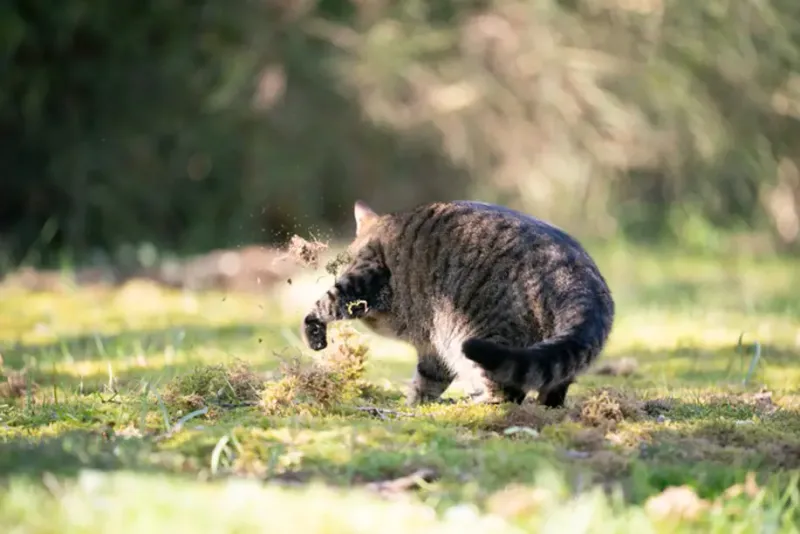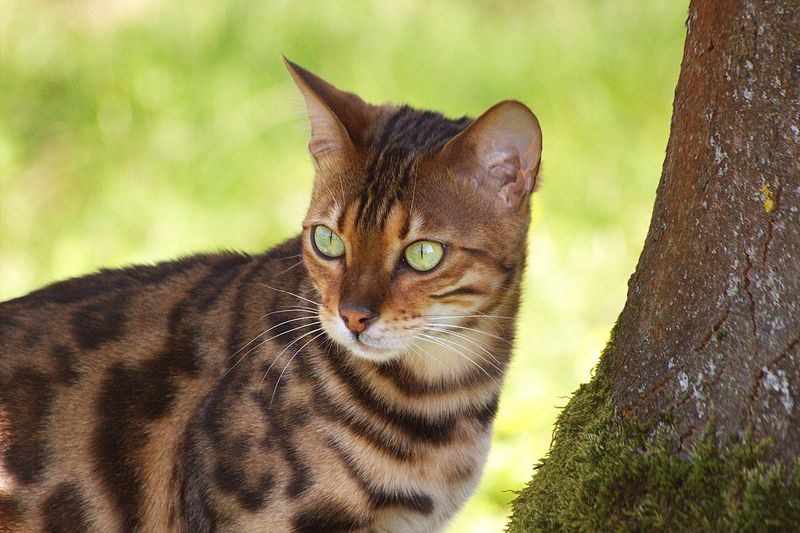📖 Table of Content:
- 1. Seeking Shade
- 2. Staying Low to the Ground
- 3. Becoming Nocturnal
- 4. Panting Sparingly
- 5. Finding Water Sources
- 6. Minimizing Movement
- 7. Grooming More Frequently
- 8. Stretching Out
- 9. Hiding in Cool Structures
- 10. Sleeping on Cool Surfaces
- 11. Using Ventilation
- 12. Avoiding Asphalt
- 13. Resting During the Hottest Hours
- 14. Digging Shallow Holes
- 15. Staying Thin and Fit
Summer heat can be relentless, especially for animals that spend most of their time outdoors. While humans seek air conditioning or shaded patios to cool off, outdoor cats have to rely on their instincts and environment to survive scorching temperatures. These clever creatures have evolved a wide range of behaviors and tactics to manage the heat and keep themselves safe, even when the sun is at its most unforgiving.
Outdoor cats are incredibly resilient, but their comfort and safety during hot weather don’t come by chance. They adapt their routines, habits, and environments to counter the heat’s effects, relying on natural techniques that often go unnoticed by casual observers. Whether they’re hunting in the early morning hours or finding the coolest patch of earth to nap on, their survival methods are both fascinating and practical.
Understanding these survival strategies not only gives us greater appreciation for feline ingenuity but can also inform how we care for our pets or community cats during summer months. Every twitch of a tail, shift in activity, or choice of rest spot reveals how cats master their environment. The following are fifteen specific tricks and habits outdoor cats use to stay cool and beat the heat when temperatures soar.
1. Seeking Shade
Instead of basking in the sun like they often do in colder seasons, outdoor cats actively seek shaded environments during hot weather. Dense shrubbery, underneath parked cars, garden furniture, or the cool side of a building all provide sanctuary from direct sunlight. Shade helps prevent overheating and keeps their body temperature more stable. These spots can be several degrees cooler than areas exposed to full sunlight, offering much-needed relief. Cats instinctively know the difference in temperature across locations and will relocate as needed. Their memory allows them to revisit previously found shady havens again and again. This simple yet effective tactic plays a vital role in their daily heat-avoidance strategy.
2. Staying Low to the Ground
Rather than perching up high where air might be still and stagnant, cats may choose to lie close to the ground, especially in shaded areas. The ground often retains coolness, particularly in the early morning or after a rain. By nestling into soil or grass, they benefit from lower temperatures right at surface level. This position can also help them detect subtle breezes that pass closer to the earth. Even in urban settings, they might sprawl out on cement or bricks where sun exposure has been limited. Such behavior isn’t accidental; it’s an intelligent, instinctive response to temperature regulation. It’s another example of how cats maximize their comfort with minimal effort.
3. Becoming Nocturnal
Adjusting their schedules allows cats to be active when temperatures are most manageable. Rather than hunting or exploring during the blazing midday sun, they shift to dawn, dusk, or nighttime hours. This natural modification reduces heat stress and allows them to conserve energy. It’s not unusual to see outdoor cats vanish during the afternoon, only to become lively as the sun begins to set. The behavior mirrors that of desert-dwelling animals who adopt similar rhythms to survive extreme heat. As heat builds throughout the day, cats retreat into hiding and emerge only when they sense the cool return of evening. Their biological clocks adjust with impressive ease to match seasonal demands.
4. Panting Sparingly
Unlike dogs, cats do not rely heavily on panting as a cooling method, using it only in cases of extreme heat. Panting in cats is rare and signals serious overheating, so they usually resort to more passive ways of lowering their body temperature. Their minimal reliance on panting reduces dehydration risk, especially since water may be limited outdoors. Instead, they reduce physical activity and manage their exposure to heat sources. You might never see an outdoor cat pant unless it’s in distress, a testament to how effectively they regulate heat otherwise. This makes observing feline behavior crucial, as excessive panting could indicate an emergency. For the most part, cats avoid reaching this point through preventive behaviors.
5. Finding Water Sources
Water is a critical survival component, and outdoor cats become adept at finding hidden sources. Beyond the obvious puddles and birdbaths, they’ll drink from leaky faucets, dripping air conditioners, or early morning dew on plants. Their heightened sense of smell helps them detect water even in unlikely places. They also remember spots where they previously quenched their thirst and revisit them regularly. Though they’re not naturally heavy drinkers, in hot weather they will seek hydration with greater intent. Staying hydrated supports internal cooling and improves their heat resistance. Keeping water accessible is one of the few ways we can assist them directly in this effort.
6. Minimizing Movement
Limiting physical exertion during the day helps cats conserve energy and reduce internal heat buildup. Rather than leaping from fences or chasing insects, they may choose to lounge for hours at a time. This semi-hibernation-like behavior is a practical reaction to environmental extremes. Activity may spike at night, but during the day, stillness becomes a survival mechanism. Even playful cats become subdued in oppressive heat, conserving every bit of strength for cooler times. The less they move, the less heat their muscles generate, which keeps their core temperature safer. It’s a quiet but crucial way they avoid overheating.
7. Grooming More Frequently
A noticeable uptick in grooming can actually be a sign of a cat trying to cool off. When they lick their fur, saliva evaporates from the coat, creating a cooling effect similar to sweating. This behavior serves as both hygiene and heat management. Grooming also flattens the fur, reducing insulation and allowing more heat to escape. It’s especially helpful for long-haired cats, whose coats can trap extra warmth. This self-regulation method is performed often and with care, showing how cats intuitively use their own bodies for comfort. Overgrooming, however, can signal stress or heat-related issues and should be monitored.
8. Stretching Out
During the hottest hours, cats often adopt long, stretched-out postures that increase surface area and aid in heat dissipation. Instead of curling up to retain warmth, they sprawl flat on their sides or backs. These positions expose more of their body to the air, promoting faster cooling. Lying belly-up also allows heat to escape from their core, where temperatures are higher. You might see a cat on a shaded patio, limbs extended, soaking in a faint breeze. Each pose is deliberate and tied to thermal comfort rather than relaxation alone. It’s another example of their clever heat-mitigation instincts.
9. Hiding in Cool Structures
Shelters such as garages, sheds, barns, or even hollow tree trunks provide cool retreats from the sun. Cats remember which places stay cold throughout the day and return to them as safe zones. These structures often offer shade, insulation, and sometimes airflow that reduces interior heat. A barn cat, for example, may spend hours curled under hay bales or in corners shielded from direct light. Even abandoned buildings can offer refuge if entry is possible. This reliance on man-made or natural shelters is a hallmark of outdoor feline survival. Providing access to such spaces can significantly aid local stray populations.
10. Sleeping on Cool Surfaces
Certain surfaces, like tile floors, bricks, or stone steps, remain cool despite ambient heat. Cats naturally gravitate toward these materials when seeking relief. They may lie directly on them or press their bellies close for better thermal exchange. These surfaces are often shaded, further enhancing their cooling potential. Even gravel or garden pathways can serve this purpose if kept out of sunlight. Unlike plush bedding, these hard materials draw heat away from the body. This preference reflects the cat’s acute awareness of physical comfort and temperature cues.
11. Using Ventilation
Catching a breeze is another efficient way for outdoor cats to stay cool. They may lie in alleyways, near doorways, or along vents where air circulates freely. Some even find spots between buildings where wind tunnels form naturally. Movement of air increases evaporation from the skin and fur, providing a cooling sensation. Ventilated locations may also offer shade, doubling their effectiveness. Cats sense airflow quickly and reposition themselves for maximum exposure. These mini windbreaks become essential microclimates in hot weather.
12. Avoiding Asphalt
During sunny days, asphalt can become dangerously hot, easily burning sensitive paw pads. Cats instinctively avoid blacktop areas, especially in direct sun. Instead, they stick to grassy routes, shaded sidewalks, or dirt trails. Their ability to detect heat through their paws helps them navigate safely. Walking during early morning or late evening hours is also a way to avoid this hazard. Hot surfaces not only risk injury but also radiate heat upward, increasing overall body temperature. Avoiding them entirely is a smart and protective move.
13. Resting During the Hottest Hours
Rather than fighting the heat, cats give in to it by resting or sleeping during the day’s peak warmth. Midday becomes a time of stillness and retreat. They may nap for hours, conserving energy and avoiding unnecessary strain. This pause in activity mirrors the siesta culture seen in human hot-weather regions. As temperatures drop in the evening, they return to movement and curiosity. Their ability to align their biological rhythms with environmental cycles is impressive. This daily schedule adaptation helps them survive long, hot seasons with minimal stress.
14. Digging Shallow Holes
A clever behavior some cats exhibit is digging shallow pits in cool, shaded soil. These depressions expose cooler earth and offer a more comfortable surface to lie on. It’s not a behavior all cats display, but those that do benefit from the cooler microclimate. The ground a few inches below the surface remains less affected by direct heat. By resting in the hole, cats create a custom cooling zone. You might notice disturbed soil near flowerbeds or garden edges, signs of this inventive technique. It’s a subtle yet smart survival trick.
15. Staying Thin and Fit
Outdoor cats tend to have leaner builds, a natural result of high activity levels and regulated diets. Less body fat makes it easier to stay cool, as fat retains heat more than muscle. Their slim physique supports faster heat dissipation and better temperature regulation. Cats carrying excess weight may suffer more in summer, so fitness becomes a natural advantage. Unlike pampered indoor pets, outdoor cats self-regulate their food intake based on availability. This lean condition is a functional adaptation to their environment, not just a cosmetic trait. It’s another quiet way they’re built for warm-weather resilience.
